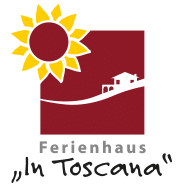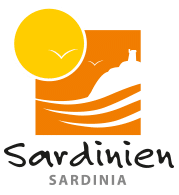
Home » Tuscany advice and service » Tuscany travel guide and city information » Info Lake Garda and Trentino South Tyrol

Information about Lake Garda and the surrounding area
Thanks to the light, sparkling red wine, the small town of Bardolino is on everyone's lips. It grows in the hilly hinterland of the former fishing village, which today exudes a more urban atmosphere.
The open-plan old town with its wide streets and numerous shops as well as a long waterfront promenade invite you to stroll. Things are lively here until late in the evening. Many shops stay open until midnight and the beautiful restaurants, bars and discos attract night owls from all over the region.
Inland from Bardolino, surrounded by picturesque vineyards and olive groves, there are numerous wineries and oil mills that sell their products directly, offer wine and oil tastings and sometimes have set up small museums. Bardolino has beautiful beaches to the right and left of the town center and you can walk directly along the lakeshore to the neighboring towns of Garda or Lazise.
Cisano a small, tranquil town south of Bardolino lies directly on the lake. There are good swimming opportunities and large family-friendly campsites with their own beaches. In Cisano you can eat well in a pleasant atmosphere in several restaurants. To the south of the town, you can visit the olive oil museum “Museo dell'Olio”, where you can also purchase lots of culinary delicacies.
The municipality of Brenzone consists of 16 small villages and hamlets scattered at the foot of Monte Baldos. They have all retained their charm and originality - narrow, often very steep streets, historic houses, olive groves and a peace and quiet that you don't often find on the lake anymore.
Some towns are located directly on the water, have picturesque harbor basins, beautiful lakeside promenades, riverside paths and swimming areas. They are known for their fish specialties such as Garda eel and sardines, which are among the region's delicacies.
The other villages are further up in the middle of untouched nature and offer wonderful lake views. The paths there are often extremely steep, narrow, winding and definitely worth seeing. Any location in Brenzone is an excellent starting point for excursions to Monte Baldo, making the community very popular with hikers, bikers and nature lovers. Beautiful hotels and campsites offer visitors numerous accommodation options.
With more than 20.000 inhabitants, Desenzano is the largest town on the lake and is far less dominated by tourism than its neighboring towns. Around the harbor and in the old town, beautifully restored trading houses testify to Desenzano's long tradition as one of the most important trading centers in Northern Italy.
The city's continued prosperity to this day is evident in the many fine shops, the large marina and the elegant promenade along the lake. Desenzano is also a bishop's seat, the location of higher schools and an attractive shopping location and has a colorful nightlife to offer with its many bars and discos.
Its location on the Milan – Venice railway line makes it an important hub for rail travelers. South of Desenzano lie the “Colline Moreniche Mantovane del Garda”, moraine hills that were formed during the Ice Age and extend to the Po Valley. Bitter battles took place here in the Italian War of Liberation against the Austrians. On a trip to this extremely picturesque region - despite its warlike past - you will find traces of the bloody battles everywhere.
Lonato
This beautiful, typically Lombard town is located about six kilometers west of Desenzano. It has a magnificent baroque cathedral with a mighty dome and a towering city tower. From the “Rocca” castle ruins located on a hill, which towers over the striking historic town center, you can enjoy a wonderful view over the moraine hill landscape to the lake. Lonato is well known to historians because Napoleon won a battle against the Austrians here in 1796.
Garda, which gave the lake its name in the 12th century, is now a popular holiday resort. It is surrounded by hills in the middle of a lush green bay.
The Mediterranean vegetation of cypresses, olive trees, myrtle and oleander, the stylish Venetian palaces, a wonderful waterfront promenade and a winding old town center create an extremely atmospheric overall picture and it is not surprising that the place has been considered the pearl of the lake since Roman times.
In the many restaurants, cafes and ice cream parlors on the beautiful long waterfront promenade you can indulge in sweet idleness while enjoying the view of the lake - or the fantastic sunset for which Garda is famous. The swimming opportunities around Garda are some of the best on the entire eastern shore. South of the town the beach extends to Bardolino, north to the magical headland of Punta San Viglio.
costermano
The village of Costermano is surrounded by vineyards and olive groves east of Garda. Here in the hilly hinterland you can enjoy absolute peace and a wonderful view of the lake. The well-developed state road takes you to lively Garda or the lakeside beach in just a few minutes. There is also a panoramic route through the “dei Mulini” valley with its old mills from Costermano to Garda. At the end of the town of Costermano - overlooked by a large steel cross - is one of the largest German military cemeteries in Italy, which was inaugurated in 1960 by the “Volksbund Deutsche Kriegsgräbersorge”.
marciaga
This district of Costermano is particularly well known to golfers. Here in the wonderful wine and olive hill landscape lies a beautiful 18-hole course with a fantastic view of Lake Garda. There are also some exquisite hotel complexes around Marciaga.
At the foot of a steep mountain slope is the charming village of Limone, built in terraces next to the lake. The houses here cling to the rock, nested one on top of the other, and the winding streets of the picturesque old town are decorated with flowers.
Above there are endless olive groves and rustic lemon gardens. However, the name of the village of 1000 inhabitants originally had nothing to do with them. Limone comes from the Latin word “Limes” – border in German – because the border between Austria and Italy ran here for a long time.
Nevertheless, Limone has made the lemon his symbol and markets it excellently. They are available as wall tiles, on T-shirts, towels and postcards, in plaster or real. The place is an extremely popular tourist destination and regularly reaches its capacity limits in summer. But away from the hustle and bustle in the narrow side streets or in the higher olive groves, things are still very quiet and romantic.
South of Limone the bank becomes a little wider. There is a nice long beach and some campsites.
This lively town on the southeast of Lake Garda has a car-free medieval old town surrounded by a well-preserved, crenellated city wall.
The narrow harbor basin with its lively waterfront promenade stretches deep into the narrow streets and small squares. Cozy restaurants, bars and cafes are lined up here. The colorful rows of houses in the old town center are great for strolling and shopping and there is always something going on in Lazise in the evenings.
Outside the old town there is a mighty six-tower Scalier castle in a beautiful park and south of the town there is a long beach - although you have to pay for it. There you will also find a variety of well-equipped, child-friendly campsites with their own swimming facilities. This and the proximity to theme parks such as Gardaland or Canevaworld make Lazise an extremely popular family holiday destination.
There
South of Lazise is the village of Colà, a few minutes from Lake Garda. The thermal bath “Parco Thermale del Garda” is located there in the middle of a beautiful park. The 5000 square meter thermal lake with its fountains, small waterfalls, grottos and various underwater massages invites you to take a soothing, relaxing bath.
To the east of the gentle, almost completely flat meadow landscape of the south bank is the bustling Peschiera del Garda. Its location on the Mincio - the only outflow of Lake Garda - gave the town of 9000 inhabitants special strategic importance early on.
Today it is particularly an important hub for train travelers, as it has a train station - like only Desenzano on the lake. This is just a stone's throw from the old town and, among other things, a stop for the express trains on the Milan-Venice route.
Peschiera's old town, completely surrounded by canals, lies within a mighty, beautifully overgrown fortress. When strolling through the narrow streets - which are not dominated by tourism - you will find many nice shops and small bars.
On the flat shore between Peschiera and Sirmione there are good swimming opportunities and numerous campsites with large meadow areas that extend to the lake. The popular Gardaland amusement park is just two kilometers from Peschiera and the hinterland with its moraine hills and the pretty Mincio river is also a wonderful destination.
Castelnuovo del Garda
To the east of Peschiera, slightly away from the lake, Castelnuovo lies in the middle of the extremely fertile moraine hills. The landscape is characterized by vineyards, olive groves, cypresses and rustic farmhouses and magnificent old villas. In addition to viticulture and agriculture, the community lives from small industry and tourism. It benefits from the proximity to Verona and numerous nature and amusement parks, excellent traditional cuisine and beautiful accommodation.
The lively, sophisticated holiday resort of Riva is surrounded by mighty mountains on the narrow northern tip of Lake Garda.
With around 13.000 inhabitants, it is the second largest town on the lake after Desenzano. It has only been part of Italy since 1919 and was under Austrian rule for a long time before that. This can still be felt and leads to a pleasant mix of Italian lightness and Tyrolean down-to-earthness.
In the 19th century, the charming little town developed into a sought-after health resort, which has not changed to this day. The mild climate, a highly active cultural scene, many sights and excursion destinations make Riva interesting for young and old all year round. The imposing mountains attract mountain bikers and climbers in droves; Surfers and sailors like to come here because of the reliable winds; Sun worshipers and water lovers will find the most beautiful and longest bathing beach on the lake here.
A wide moat separates Sirmione's traffic-calmed old town from the mainland, which protrudes four kilometers long and narrow into Lake Garda, making the much-visited town the icing on the cake of the southern shore of the lake in the truest sense of the word.
A beautiful moated castle sits next to the only bridge and the romantic, winding, colorful old town makes Italian dreams come true. To the north, the park-like tip of the island invites you to take an idyllic walk with an enchanting view of the lake.
At the end of the cypress and olive groves lie the “Grottes of Catullus” – the ruins of one of the largest Roman villas in Italy. Here at the tip of the island, the shore is surrounded by a wide ring of limestone slabs and you can find some very nice swimming areas
The sulfurous Boiola medicinal spring, which rises from the bottom of Lake Garda next to the peninsula, has made Sirmione an important spa town since Roman times, which today has two modern thermal centers and several hotels with thermal departments: the “Catullo” and “Virgilio” thermal baths.
A few colorful houses lie idyllically at the foot of steep rocks directly on the lakeshore - a sight that already made Goethe rave about in 1786.
Back then, Torbole was still a small, dreamy fishing village, but today the village, which has just 900 inhabitants, is known far beyond the borders of Italy: it is one of the best surfing areas in Europe. The reason for this is the absolutely reliable Lake Garda winds, which develop their full power up here on the narrow northern tip.
But Torbole has now completely adapted to its young, sporty guests. An entire section of beach is only available to surfers, there are several surf centers and most of the hotels and campsites on the lake also have their own board rentals. Mountain bikers and climbers also like to come to the town with its youthful flair and the many bars and discos, which is surrounded by beautiful mountains. And if you don't want to have anything to do with sports on your vacation, you can simply follow in Goethe's footsteps and enjoy the picturesque view.
Naked
It couldn't be more different: Nago - the other town in the twin community and a quiet mountain village - is nestled between vines about 150 meters above the lake. Alpine architecture dominates the pretty town center with massive houses and eaves roofs. Just outside, a castle ruin sits on a densely overgrown rock that slopes steeply down to the lake. The “Strada del Monte Baldo” begins in the middle of Nago, an adventurous, winding road up to Monte Baldo. Below the town are the so-called “Marmitte the Giganti”. There are glacier potholes that were formed during the Ice Age, and their steep walls are great for climbing. The “Palestra di Roccia” wall is one of the most popular climbing rocks in the area.
Things are rather tranquil in the pretty harbor town on the eastern shore of Lake Garda. Even in midsummer you can still stroll through the narrow streets of the old town or along the waterfront, away from the crowds of tourists.
Steep hairpin bends take you to the village of Albisano, from where you can enjoy a fantastic view over the lake to the opposite bank. A car ferry runs there - more precisely to Maderno - from the port in Torri several times a day.
There are very good swimming opportunities along the shore in Torri. On the beautiful pebble beach “Baia dei Pini”, trees provide pleasant shade and palm trees provide a Mediterranean flair. Just outside the town on the north side of the lush green headland of Punta San Viglio lies the picturesque beach “Baia delle Sirene”.
Trento, a city steeped in history where Italian culture meets Central European culture. As a Roman city (it was declared Splendidum Municipium in 46 AD) and council city (1545 - 1563), Trent today preserves in its important monuments the entire art-historical heritage of two cultures, the Italian and the Nordic. Trento is unique among the Alpine cities because the Renaissance had a strong influence on the city, and thanks to recent restoration work, the evidence of this era has now been restored to its former glory. Worth seeing are, among other things, Castello del Buonconsiglio (residence of the prince-bishops of Trent for several centuries), the cathedral with its wonderful square, the houses decorated with frescoes, the council churches as well as museums and exhibitions. Today, Trento is still the city where the art, culture and traditions of different cultures come together.
The walk leads from the Castello del Buonconsiglio through the old town to the Cathedral Square - the ideal opportunity to admire the wonderful and frescoed palaces of the city. The journey of discovery continues through the streets of Via San Marco, Via Manci and Via Belenzani, through alleys and squares that have other historic palazzi. In addition, the famous arcades of Via Suffragio, the ancient towers and the crenellated walls are worth seeing. Throughout the walk you can see how the Renaissance style blends harmoniously with other architectural styles.
Heaven is here, where Juliet lives, is stated in William Shakespeare's tragedy Romeo and Juliet. And Julia, we know, lived in Verona. The metropolis at the end of the most important Alpine crossing to Italy looks back on a history that goes back more than two thousand years. The Romans brought their three most important trade routes together here - one of the most powerful city republics in Italy emerged in the Middle Ages, but Verona only became truly world-famous thanks to the legendary lovers. This film also wants to be a kind of declaration of love - with a "tragic" happy ending - because ultimately it has to be established that the two lovers probably never existed, but were only symbolic figures of a cruel and conflict-filled past. A past that experienced its heyday with the rule of the “della Scala” family - both negatively and positively. Until the fall of the dynasty in 1387, Verona became a major Italian power, whose influence at times extended into Tuscany. Art and literature were legendary, and countless artists found a new home here, including Dante, who even glorified the so-called Scaligeri in his Divine Comedy out of gratitude. The example of the despotic rulers also shows how much cunning and treachery was used to rule during this time. So the huge Castelvecchio came into being only because the Scaligeris were so hated by their own subjects that they had to hide behind the walls of the fortress. Starting from the thirteenth and fourteenth centuries, the journey goes to the Roman beginnings and then back to the present. Every visitor to Verona today knows the charming atmosphere when the opera season begins on Piazza Bra in summer. The Roman arena - the largest of all preserved ancient amphitheaters after the Colosseum in Rome and the arena in Capua - is then transformed into a gigantic open-air stage and celebrations also take place in the neighboring streets and squares. In the protocol for inclusion in the World Heritage List, UNESCO characterized Verona as a city that outstandingly represents all stages of European history" and it is certainly this unusual harmony in which buildings from different eras combine to form an architectural heaven connect on earth.
Your contact persons
Ms. Elisa Santoni
Mr. Davide Azzaroni
Tel. +49 89 123 92 998
Cell phone +49 176 49657909









